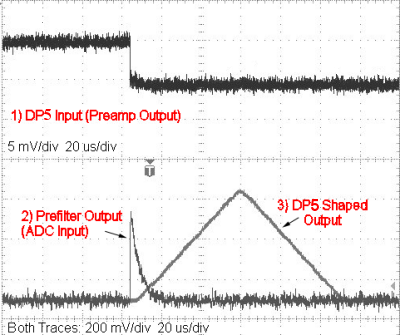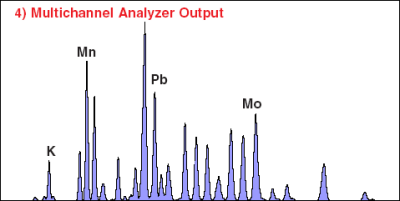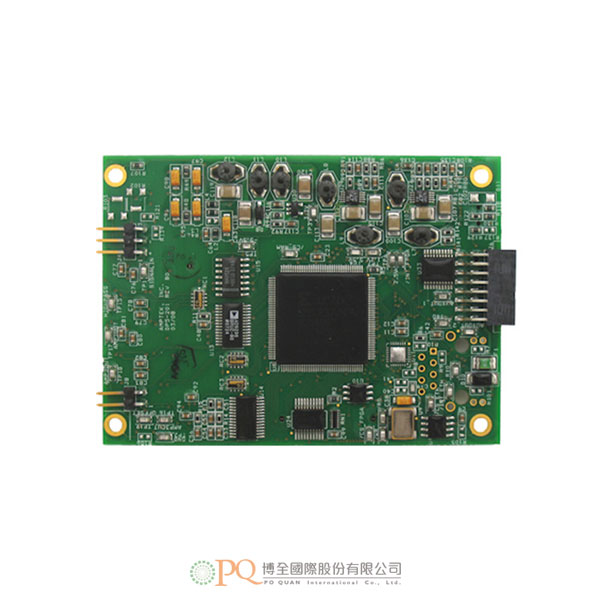
-
 micrux
micrux
-
 AARONIA AG
AARONIA AG
-
 ADASH
ADASH
-
 Amptek
Amptek
- з”Ёж–ј XRF/EDS зҡ„ FastSDD X е°„з·ҡжҺўжё¬еҷЁ
- Mini-X2 Xе°„з·ҡз®Ў
- PLEIADES XRA-700 жҺўжё¬еҷЁйҷЈеҲ—
- Si-PIN X е°„з·ҡеҒөжё¬еҷЁ
- CdTe X е°„з·ҡе’ҢдјҪйҰ¬е°„з·ҡжҺўжё¬еҷЁ
- Amptek жҺўжё¬еҷЁзҡ„зңҹз©әжҮүз”Ё
- OEM XRF и§ЈеҶіж–№жЎҲ
- XRF/EDS йҷ„件
- ж•ёдҪҚи„ҲиЎқиҷ•зҗҶеҷЁ
- еӨҡйҖҡйҒ“еҲҶжһҗе„Җ пјҲMCAпјү
- е®Ңж•ҙзҡ„ XRF еҜҰй©—еҘ—件
-
 AOiP
AOiP
-
 AstroNova
AstroNova
-
 AWSensors
AWSensors
-
 Automatic Research
Automatic Research
-
 BASI
BASI
-
 BRS
BRS
-
 BWB Technologies
BWB Technologies
-
 Cmc
Cmc
-
 CTRL
CTRL
-
 CALMET
CALMET
-
 CHECKLINE
CHECKLINE
-
 Coxem
Coxem
-
 C-Tech
C-Tech
-
 DV Power
DV Power
-
 DANATRONICS
DANATRONICS
-
 ECH
ECH
-
 Elsys
Elsys
-
 Enervac
Enervac
-
 Enapter
Enapter
-
 ELVEFLOW
ELVEFLOW
-
 EA Technology
EA Technology
-
 EL-CELL
EL-CELL
-
 ENERGY SUPPORT
ENERGY SUPPORT
-
 Electrothermal
Electrothermal
-
 FASTEC
FASTEC
-
 GE
GE
-
 GMW
GMW
-
 Gaskatel
Gaskatel
-
 GIUSSANI
GIUSSANI
-
 Globecore
Globecore
-
 GREENLIGHT
GREENLIGHT
-
 GRZ
GRZ
-
 HTW
HTW
-
 HIGH SENSE SOLUTIONSHTW
HIGH SENSE SOLUTIONSHTW
-
 HUBER
HUBER
-
 Labnics
Labnics
-
 Ida
Ida
-
 LIQUID
LIQUID
-
 Instytut Fotonowy
Instytut Fotonowy
-
 KEHUA TECH
KEHUA TECH
-
 JGG
JGG
-
 HVPD
HVPD
-
 Jenway
Jenway
-
 Jacomex
Jacomex
-
 IVIUM
IVIUM
-
 ndb
ndb
-
 OZM
OZM
- з©©е®ҡжҖ§е’Ңзӣёе®№жҖ§жё¬и©Ұ
- йқҲж•ҸеәҰе’ҢзҲҶзӮёжҖ§и©Ұй©—
- зҲҶзӮёзү©жҖ§иғҪжё¬и©Ұ
- зҒ«зӮ®жҺЁйҖІеҠ‘еҪҲйҒ“жё¬и©Ұ
- зҒ«з®ӯжҺЁйҖІеҠ‘еҪҲйҒ“жё¬и©Ұ
- йӣ»зӮёиЈқзҪ®жё¬и©Ұ
- еҜҰй©—е®ӨйҳІзҲҶжҡЁе®үе…Ёе„ІеӯҳиЈқзҪ®
- йӢ°йӣ»жұ зҲҶзӮёжҖ§жӘўжё¬е„Җ
- зІүеЎөйӣІзҲҶзӮёжҖ§жё¬и©Ұ
- жҝғеәҰжҘөйҷҗзҡ„зҮғзҮ’жё¬и©Ұе„Җ
- жҷӮй–“еЈ“еҠӣжё¬и©Ұе„Җ
- й«ҳеЈ“йҮң
- ж¶Ій«”иҮӘзҮғжә«еәҰжё¬и©Ұе„Җ
- зІүеЎөеұӨй»һзҒ«жә«еәҰжё¬и©Ұе„Җ
- жңҖдҪҺй»һзҒ«жә«еәҰжё¬и©Ұе„Җ
- зӣёе°ҚиҮӘзҮғжә«еәҰжё¬и©Ұе„Җ
- 75В°C дёӢзҡ„зҶұз©©е®ҡжҖ§жё¬и©Ұ
- иҮӘзҷјжҖ§зҶұзү©иіӘжё¬и©Ұе„Җ
- зІүеЎөе’Ңж°Јй«”зҲҶзӮёе®Ө
- еҜҰй©—е®ӨзҙҡзҲҶиҪҹе®Ө
-
 Redoxme
Redoxme
-
 Serstech
Serstech
-
 SATIR
SATIR
- дәәй«”й«”жә«жӘўжё¬пҪңе·ҘжҘӯжҮүз”Ёзҙ…еӨ–з·ҡзҶұеғҸе„Җзі»еҲ—
- и»Ҡз”Ёе®үе…ЁиЈқзҪ®|иј”иҰ–|еӨңиҰ–жҮүз”Ёзҙ…еӨ–з·ҡзҶұеғҸе„Җзі»еҲ—
- дҝқе…Ё|зӣЈиҰ–|йҳІзҰҰжҮүз”Ёзҙ…еӨ–з·ҡзҶұеғҸе„Җзі»еҲ—
- йҶ«зҷӮжҮүз”Ёзҙ…еӨ–з·ҡзҶұеғҸе„Җзі»еҲ—
- ж•ҙеҗҲеһӢеӨҡйҮҚжҮүз”Ёзҙ…еӨ–з·ҡзҶұеғҸе„Җж ёеҝғзі»еҲ—
- з ”зҷј|жҗңж•‘|е®үйҳІ|жҺўеӢҳ|жӘўжё¬жҮүз”Ёз„Ўдәәж©ҹзҶұеғҸе„Җзі»зөұзі»еҲ—
-
 VacCoat
VacCoat
-
 Zurich
Zurich
- micrux
- AARONIA AG
- ADASH
-
Amptek
- з”Ёж–ј XRF/EDS зҡ„ FastSDD X е°„з·ҡжҺўжё¬еҷЁ
- Mini-X2 Xе°„з·ҡз®Ў
- PLEIADES XRA-700 жҺўжё¬еҷЁйҷЈеҲ—
- Si-PIN X е°„з·ҡеҒөжё¬еҷЁ
- CdTe X е°„з·ҡе’ҢдјҪйҰ¬е°„з·ҡжҺўжё¬еҷЁ
- Amptek жҺўжё¬еҷЁзҡ„зңҹз©әжҮүз”Ё
- OEM XRF и§ЈеҶіж–№жЎҲ
- XRF/EDS йҷ„件
- ж•ёдҪҚи„ҲиЎқиҷ•зҗҶеҷЁ
- еӨҡйҖҡйҒ“еҲҶжһҗе„Җ пјҲMCAпјү
- е®Ңж•ҙзҡ„ XRF еҜҰй©—еҘ—件
- AOiP
- AstroNova
- AWSensors
- Automatic Research
- BASI
- BRS
- BWB Technologies
- Cmc
- CTRL
- CALMET
- CHECKLINE
- Coxem
- C-Tech
- DV Power
- DANATRONICS
- ECH
- Elsys
- Enervac
- Enapter
- ELVEFLOW
- EA Technology
- EL-CELL
- ENERGY SUPPORT
- Electrothermal
- FASTEC
- GE
- GMW
- Gaskatel
- GIUSSANI
- Globecore
- GREENLIGHT
- GRZ
- HTW
- HIGH SENSE SOLUTIONSHTW
- HUBER
- Labnics
- Ida
- LIQUID
- Instytut Fotonowy
- KEHUA TECH
- JGG
- HVPD
- Jenway
- Jacomex
- IVIUM
- ndb
-
OZM
- з©©е®ҡжҖ§е’Ңзӣёе®№жҖ§жё¬и©Ұ
- йқҲж•ҸеәҰе’ҢзҲҶзӮёжҖ§и©Ұй©—
- зҲҶзӮёзү©жҖ§иғҪжё¬и©Ұ
- зҒ«зӮ®жҺЁйҖІеҠ‘еҪҲйҒ“жё¬и©Ұ
- зҒ«з®ӯжҺЁйҖІеҠ‘еҪҲйҒ“жё¬и©Ұ
- йӣ»зӮёиЈқзҪ®жё¬и©Ұ
- еҜҰй©—е®ӨйҳІзҲҶжҡЁе®үе…Ёе„ІеӯҳиЈқзҪ®
- йӢ°йӣ»жұ зҲҶзӮёжҖ§жӘўжё¬е„Җ
- зІүеЎөйӣІзҲҶзӮёжҖ§жё¬и©Ұ
- жҝғеәҰжҘөйҷҗзҡ„зҮғзҮ’жё¬и©Ұе„Җ
- жҷӮй–“еЈ“еҠӣжё¬и©Ұе„Җ
- й«ҳеЈ“йҮң
- ж¶Ій«”иҮӘзҮғжә«еәҰжё¬и©Ұе„Җ
- зІүеЎөеұӨй»һзҒ«жә«еәҰжё¬и©Ұе„Җ
- жңҖдҪҺй»һзҒ«жә«еәҰжё¬и©Ұе„Җ
- зӣёе°ҚиҮӘзҮғжә«еәҰжё¬и©Ұе„Җ
- 75В°C дёӢзҡ„зҶұз©©е®ҡжҖ§жё¬и©Ұ
- иҮӘзҷјжҖ§зҶұзү©иіӘжё¬и©Ұе„Җ
- зІүеЎөе’Ңж°Јй«”зҲҶзӮёе®Ө
- еҜҰй©—е®ӨзҙҡзҲҶиҪҹе®Ө
- Redoxme
- Serstech
-
SATIR
- дәәй«”й«”жә«жӘўжё¬пҪңе·ҘжҘӯжҮүз”Ёзҙ…еӨ–з·ҡзҶұеғҸе„Җзі»еҲ—
- и»Ҡз”Ёе®үе…ЁиЈқзҪ®|иј”иҰ–|еӨңиҰ–жҮүз”Ёзҙ…еӨ–з·ҡзҶұеғҸе„Җзі»еҲ—
- дҝқе…Ё|зӣЈиҰ–|йҳІзҰҰжҮүз”Ёзҙ…еӨ–з·ҡзҶұеғҸе„Җзі»еҲ—
- йҶ«зҷӮжҮүз”Ёзҙ…еӨ–з·ҡзҶұеғҸе„Җзі»еҲ—
- ж•ҙеҗҲеһӢеӨҡйҮҚжҮүз”Ёзҙ…еӨ–з·ҡзҶұеғҸе„Җж ёеҝғзі»еҲ—
- з ”зҷј|жҗңж•‘|е®үйҳІ|жҺўеӢҳ|жӘўжё¬жҮүз”Ёз„Ўдәәж©ҹзҶұеғҸе„Җзі»зөұзі»еҲ—
- VacCoat
- Zurich
OEM ж•ёдҪҚи„ҲиЎқиҷ•зҗҶеҷЁе’Ң MCA
OEM Digital Pulse Processor & MCA еһӢиҷҹпјҡDP5-
Amptekзҡ„ DP5 жҳҜдёҖж¬ҫй«ҳжҖ§иғҪж•ёдҪҚи„ҲиЎқиҷ•зҗҶеҷЁпјҲDPPпјүпјҢе·ІйҮқе°Қ OEM е’ҢеҜҰй©—е®ӨдҪҝз”ЁиҖ…йңҖжұӮйҖІиЎҢдәҶжңҖдҪіеҢ–гҖӮ е®ғзҡ„дҪңз”ЁжҳҜе°ҮеүҚзҪ®ж”ҫеӨ§еҷЁијёеҮәдҝЎиҷҹж•ёдҪҚеҢ–пјҢеҸ–д»ЈдәҶеӮізөұйЎһжҜ”е…үиӯңзі»зөұдёӯзҡ„ж•ҙеҪўж”ҫеӨ§еҷЁе’Ң MCAгҖӮ иҲҮеӮізөұзі»зөұзӣёжҜ”пјҢDP5 зҡ„е„ӘеӢўжҳҺйЎҜпјҢйҖҷдәӣе„ӘеӢўеҢ…жӢ¬ж”№йҖІзҡ„жҖ§иғҪпјҲжҘөй«ҳзҡ„и§ЈжһҗеәҰгҖҒжёӣе°‘еҪҲйҒ“зјәйҷ·гҖҒжӣҙй«ҳзҡ„еӮійҒһйҮҸе’Ңеўһеј·зҡ„з©©е®ҡжҖ§пјүгҖҒж“ҙеұ•зҡ„йқҲжҙ»жҖ§гҖҒдҪҺеҠҹиҖ—гҖҒе°Ҹе°әеҜёе’ҢдҪҺжҲҗжң¬зӯүгҖӮ
DP5 дҪҝз”Ёе°Ҳз”Ёйӣ»и·ҜйҖІиЎҢи„ҲиЎқиҷ•зҗҶгҖӮ е®ғеҢ…жӢ¬дёҖеҖӢ 8051 зӣёе®№еҫ®иҷ•зҗҶеҷЁпјҢз”Ёж–јжҺ§еҲ¶иЈқзҪ®гҖӮ йҖҡдҝЎд»ӢйқўеҢ…жӢ¬ RS-232гҖҒUSB е’Ңд№ҷеӨӘз¶Іи·ҜгҖӮ е®ғйӮ„жңүеӨҡжўқйҖҡз”Ё I/O з·ҡи·ҜгҖӮ DP5 йҒ©еҗҲ OEM е’ҢйңҖиҰҒе®ҡиЈҪеҠҹиғҪдё”зҶҹжӮүйӣ»еӯҗеҷЁд»¶зҡ„еҜҰй©—е®ӨдҪҝз”ЁиҖ…гҖӮ
зү№й»һ- 80 MHz ADC
- еҸ–д»Јж•ҙеҪўж”ҫеӨ§еҷЁе’Ң MCA
- ж”ҜжҸҙд»»дёҖжҘөжҖ§зҡ„йҮҚзҪ®е’ҢеҸҚйҘӢеүҚзҪ®ж”ҫеӨ§еҷЁ
- MCS жЁЎејҸ
- 16 еҖӢ SCA
- жё…е–®жЁЎејҸ
- дёІжөҒжЁЎејҸ
- еҸҜй…ҚеӮҷдёҖеҖӢйӣ»иҚ·йқҲж•ҸеүҚзҪ®ж”ҫеӨ§еҷЁпјҢд»ҘиҲҮ PMT зөҗеҗҲдҪҝз”Ё
- йҒ©еҗҲ OEM жҲ–зү№е®ҡеҜҰй©—е®Өз”ЁйҖ”
- й«ҳеәҰеҸҜй…ҚзҪ®жҖ§


дёҠең–зҡ„и»Ңи·Ўз·ҡ 1 йЎҜзӨәдәҶ DP5 зҡ„ијёе…ҘпјҢе®ғеҗҢжҷӮд№ҹжҳҜйҮҚзҪ®еһӢйӣ»иҚ·йқҲж•ҸеүҚзҪ®ж”ҫеӨ§еҷЁзҡ„ијёеҮәгҖӮ е®ғз”ұйЎһжҜ”еүҚзҪ®жҝҫжіўеҷЁиҷ•зҗҶпјҢ然еҫҢз”ўз”ҹи»Ңи·Ўз·ҡ 2 дёӯжүҖзӨәзҡ„еүҚзҪ®жҝҫжіўеҷЁијёеҮәгҖӮ е®ғиў«ж•ёдҪҚеҢ–е’Ңж•ёдҪҚиҷ•зҗҶпјҢ然еҫҢз”ўз”ҹи»Ңи·Ўз·ҡ 3 дёӯжүҖзӨәзҡ„ DP5 ж•ҙеҪўијёеҮәгҖӮ жңҖеҫҢпјҢDP5 жңғз”ҹжҲҗдёҖеҖӢеӨҡйҖҡйҒ“еҲҶжһҗе„ҖпјҲMCAпјүйЎһеһӢзҡ„ијёеҮәе…үиӯңпјҢеҰӮең– 4 жүҖзӨәгҖӮ
еҰӮйңҖдәҶи§ЈжӣҙеӨҡдҝЎжҒҜпјҢи«Ӣз«ӢеҚіиҒҜ繫жҲ‘еҖ‘пјҒ
-
и„ҲиЎқиҷ•зҗҶжҖ§иғҪ
еўһзӣҠ
зІ—иӘҝеўһзӣҠе’Ңеҫ®иӘҝеўһзӣҠзҡ„зө„еҗҲз”ўз”ҹдәҶеҫһ x0.84 еҲ° x127.5 йҖЈзәҢеҸҜиӘҝзҡ„зёҪеўһзӣҠгҖӮ
зІ—иӘҝеўһзӣҠ
еҫһ x1.12 еҲ° x102.00 зҡ„ 16 еҖӢе°Қж•ёй–“йҡ”зІ—иӘҝеўһзӣҠиЁӯзҪ®
1.12
2.49
3.78
5.26
6.56
8.39
10.10
11.31
14.56
17.77
22.42
30.83
38.18
47.47
66.26
102.0
еҫ®иӘҝеўһзӣҠ
еҫ®иӘҝеўһзӣҠеңЁ0.75е’Ң1.25д№Ӣй–“еҸҜиӘҝпјҢ13дҪҚи§ЈжһҗеәҰ
ж»ҝеҲ»еәҰ
1000 mV ијёе…Ҙи„ҲиЎқ @ x1 еўһзӣҠ
еўһзӣҠз©©е®ҡжҖ§
<20 ppm/° CпјҲе…ёеһӢеҖјпјү
ADC жҷӮйҗҳй »зҺҮ
20 жҲ– 80 MHzпјҢ12 дҪҚ ADCпјҲи»ҹй«”еҸҜйҒёпјү
и„ҲиЎқеҪўзӢҖ
жўҜеҪўгҖӮ е…·жңүж•ҙеҪўжҷӮй–“ t зҡ„еҚҠй«ҳж–Ҝж”ҫеӨ§еҷЁзҡ„еі°еҖјжҷӮй–“зӮә 2.2tпјҢе…¶жҖ§иғҪиҲҮзӣёеҗҢеі°еҖјжҷӮй–“зҡ„жўҜеҪўеҪўзӢҖзӣёз•¶гҖӮ
еі°еҖјжҷӮй–“
жңү 30 еҖӢи»ҹй«”еҸҜйҒёзҡ„д»Ӣж–ј 0.1 е’Ң 102 μs д№Ӣй–“зҡ„еі°еҖјжҷӮй–“пјҢе°ҚжҮүж–ј 0.05 иҮі 45 μs зҡ„еҚҠй«ҳж–Ҝж•ҙеҪўжҷӮй–“гҖӮ
е№ій ӮжҷӮй–“
жҜҸеҖӢеі°еҖјжҷӮй–“жңү 16 еҖӢи»ҹй«”еҸҜйҒёзҡ„еҖјпјҲеҸ–жұәж–јеі°еҖјжҷӮй–“пјүпјҢ>0.05 μsгҖӮ
жңҖеӨ§иЁҲж•ёзҺҮ
еі°еҖјжҷӮй–“зӮә 0.2 μs жҷӮпјҢеҸҜд»Ҙж“·еҸ–еҲ° 4 MHz зҡ„е‘ЁжңҹдҝЎиҷҹгҖӮ
жҜҸеҖӢи„ҲиЎқзҡ„жӯ»еҚҖжҷӮй–“
жӯ»еҚҖжҷӮй–“зӮә 1.05 x еі°еҖјжҷӮй–“гҖӮ з„ЎиҪүжҸӣжҷӮй–“гҖӮ
еҝ«йҖҹйҖҡйҒ“еі°еҖјжҷӮй–“
20 MHz: 200гҖҒ400гҖҒ800гҖҒ1600гҖҒ3200 ns
80 MHzпјҡ50гҖҒ100гҖҒ200гҖҒ400гҖҒ800 nsеҝ«йҖҹйҖҡйҒ“и„ҲиЎқе°Қи§ЈжһҗеәҰ
зӯүж–јеҝ«йҖҹйҖҡйҒ“еі°еҖјжҷӮй–“еҠ дёҠдҝЎиҷҹдёҠеҚҮжҷӮй–“гҖӮ
е Ҷз©ҚеҲӘйҷӨ
и„ҲиЎқй–“йҡ”еӨ§ж–јеҝ«йҖҹйҖҡйҒ“еҲҶиҫЁжҷӮй–“ 120 ns е’Ңе°Ҹж–ј 1.05 x еі°еҖјжҷӮй–“зҡ„и„ҲиЎқе°Үиў«еҲӘйҷӨгҖӮ
еҹәз·ҡжҒўеҫ©
йқһе°ҚзЁұпјҢжңү16еҖӢи»ҹй«”еҸҜйҒёзҡ„иҪүжҸӣйҖҹзҺҮиЁӯзҪ®гҖӮ
MCA жҖ§иғҪ
йҖҡйҒ“ж•ё
еҸҜзЁӢејҸиЁӯиЁҲзӮә256гҖҒ512гҖҒ1024гҖҒ2048гҖҒ4096е’Ң8192еҖӢйҖҡйҒ“гҖӮ
жҜҸйҖҡйҒ“дҪҚе…ғзө„ж•ё
3 дҪҚе…ғзө„пјҲ24 bitsпјү–16.7M иЁҲж•ёгҖӮ
й җиЁӯж“·еҸ–жҷӮй–“
10 ms иҮі 466 еӨ©
ж•ёж“ҡеӮіијёжҷӮй–“
1k йҖҡйҒ“ 5 msпјҲUSBпјүпјҢ280 msпјҲRS-232пјү
иҪүжҸӣжҷӮй–“
з„Ў
й җиЁӯ
жҷӮй–“гҖҒзёҪиЁҲж•ёгҖҒROI иЁҲж•ёгҖҒйҖҡйҒ“иЁҲж•ё
MCS жҷӮеҹә
10 ms /йҖҡйҒ“иҮі 300 s /йҖҡйҒ“
еӨ–йғЁ MCA жҺ§еҲ¶
й–ҳијёе…Ҙпјҡ еҸӘжңүеңЁеӨ–йғЁйӮҸијҜй–ҳжҺ§жҷӮжүҚжҺҘеҸ—и„ҲиЎқгҖӮ ијёе…ҘеҸҜд»ҘжҳҜй«ҳйӣ»е№іжңүж•ҲжҲ–дҪҺйӣ»е№іжңүж•ҲгҖӮ
иЁҲж•ёеҷЁ
MCA жҺҘеҸ—зҡ„ж…ўйҖҹйҖҡйҒ“дәӢ件гҖҒеӮіе…ҘиЁҲж•ёпјҲй«ҳж–јй–ҫеҖјзҡ„еҝ«йҖҹйҖҡйҒ“иЁҲж•ёпјүгҖҒйҒёж“ҮйӮҸијҜжӢ’зө•зҡ„дәӢ件е’ҢеӨ–йғЁдәӢ件иЁҲж•ёеҷЁгҖӮ
зЎ¬й«”
еҫ®иҷ•зҗҶеҷЁ
Silicon Labs 8051F340 8051 зӣёе®№ж ёеҝғиҷ•зҗҶеҷЁгҖӮ
еӨ–йғЁиЁҳжҶ¶й«”
512kB дҪҺеҠҹиҖ— SRAMгҖӮ
йҹҢй«”
иЁҠиҷҹиҷ•зҗҶйҖҸйҒҺйҹҢй«”еҸҜзЁӢејҸеҢ–пјҢеҸҜеңЁзҸҫе ҙеҚҮзҙҡгҖӮ
йҖҡдҝЎ
RS-232
жЁҷжә– RS-232 дёІиЎҢд»ӢйқўпјҢжңҖй«ҳеҸҜйҒ” 115.2 KbaudгҖӮ
USB
жЁҷжә– USB 2.0 е…ЁйҖҹпјҲ12 MbpsпјүгҖӮ
д№ҷеӨӘз¶Іи·Ҝ
жЁҷжә– 10base-T
иј”еҠ©ијёе…Ҙе’ҢијёеҮә
жӯӨйҖЈжҺҘеҷЁзҡ„дё»иҰҒз”ЁйҖ”жҳҜијёеҮә DP5 дё»иҰҒз”ЁйҖ”пјҲзҚІеҸ–е…үиӯңдёҰйҖҸйҒҺдёІиЎҢд»ӢйқўеӮіијёпјүжүҖдёҚйңҖиҰҒзҡ„йӮҸијҜиЁҠиҷҹгҖӮ йҖҷдәӣйҖҡеёёжҳҜиҲҮ DP5 иҷ•зҗҶзҡ„жҜҸеҖӢи„ҲиЎқзӣёй—ңзҡ„ "дҪҺйӣ»е№і "йӮҸијҜиЁҠиҷҹгҖӮ е®ғеҖ‘дё»иҰҒз”Ёж–јдҪҝ DP5 иіҮж–ҷж“·еҸ–иҲҮеӨ–йғЁзЎ¬й«”еҗҢжӯҘпјҢд»ҘеҸҠ DP5 зҡ„зӣҙжҺҘиЁҲж•ёеҷЁ/е®ҡжҷӮеҷЁијёеҮәгҖӮ дҝЎиҷҹиӘӘжҳҺеҰӮдёӢгҖӮ йҖЈжҺҘеҷЁзӮә 2×8 зӣҙи§’ Samtec йӣ¶д»¶иҷҹзўј ASP-135096-01гҖӮ
е–®йҖҡйҒ“еҲҶжһҗе„ҖпјҲе…ұ 16 еҖӢпјү
зЎ¬й«”
8 еҖӢ SCAпјҢе…·жңүйӮҸијҜијёеҮәгҖҒзҚЁз«Ӣзҡ„и»ҹй«”еҸҜйҒё LLD е’Ң ULDпјҢ
LVCMOS пјҲ3.3Vпјү йӣ»е№іпјҲTTL зӣёе®№пјү зЎ¬й«” SCA д№ҹеҸҜд»ҘйҖЈжҺҘеҲ°е…§йғЁиЁҲж•ёеҷЁдёҰз”ұи»ҹй«”и®ҖеҸ–гҖӮ
и»ҹй«”
8 еҖӢ SCAпјҢзҚЁз«Ӣзҡ„еҸҜйҒё LLD е’Ң ULDпјҢеҸҜеңЁ 8 зЁ®иЁӯзҪ®д№Ӣй–“йҒёж“ҮпјҢ
еҢ…жӢ¬ INCOMING_COUNTгҖҒPILEUPгҖҒMCS_TIMEBASE зӯүгҖӮ
и»ҹй«” SCA йҖЈжҺҘеҲ°е…§йғЁиЁҲж•ёеҷЁдёҰз”ұи»ҹй«”и®ҖеҸ–гҖӮж•ёеӯ—ијёе…Ҙ
е…©еҖӢзҚЁз«Ӣијёе…ҘпјҢеҸҜйҖҡйҒҺи»ҹй«”йҒёж“Ү MCA_GATEгҖҒEXTERNAL_COUNTER I/O
е…©жўқйҖҡз”Ё I/O з·ҡи·ҜпјҢз”Ёж–јиҮӘе®ҡзҫ©жҮүз”ЁзЁӢејҸгҖӮж•ёеӯ—ијёеҮә
е…©еҖӢзҚЁз«ӢијёеҮәпјҢеҸҜйҖҡйҒҺи»ҹй«”еңЁ 8 зЁ®иЁӯзҪ®д№Ӣй–“йҒёж“ҮпјҢеҢ…жӢ¬ INCOMING_COUNTгҖҒPILEUP MCS_TIMEBASE зӯүгҖӮ
е…©жўқйҖҡз”Ё I/O з·ҡи·ҜпјҢз”Ёж–јиҮӘе®ҡзҫ©жҮүз”ЁзЁӢејҸгҖӮI/O
е…©жўқйҖҡз”Ё I/O з·ҡи·ҜпјҢз”Ёж–јиҮӘе®ҡзҫ©жҮүз”ЁзЁӢејҸгҖӮ
ж•ёдҪҚзӨәжіўеҷЁ
еңЁйӣ»и…ҰдёҠйЎҜзӨәзӨәжіўеҷЁжіўеҪўгҖӮ еҸҜи—үеҠ©и»ҹй«”йҒёж“ҮйЎҜзӨәж•ҙеҪўијёеҮәгҖҒADC ијёе…ҘзӯүпјҢд»Ҙ幫еҠ©иӘҝи©ҰжҲ–жңҖдҪіеҢ–й…ҚзҪ®гҖӮ
иј”еҠ©йҖЈжҺҘеҷЁжҺҘи…іе®ҡзҫ©
жҺҘи…із·Ёиҷҹ
еҗҚзЁұ
жҺҘи…із·Ёиҷҹ
еҗҚзЁұ
1
SCA1
2
SCA2
3
SCA3
4
SCA4
5
SCA5
6
SCA6
7
SCA7
8
SCA8
9
AUX_IN_1
10
AUX_OUT_1
11
AUX_IN_2
12
AUX_OUT_2
13
IO2
14
IO3
15
GND
16
GND
йҖЈжҺҘ
йЎһжҜ”ијёе…Ҙз«Ҝ
йЎһжҜ”ијёе…ҘжҺҘеҸ—дҫҶиҮӘйӣ»иҚ·йқҲж•ҸеүҚзҪ®ж”ҫеӨ§еҷЁзҡ„жӯЈеҗ‘жҲ–иІ еҗ‘и„ҲиЎқгҖӮ
жіЁж„ҸпјҡеҸҜй…ҚеӮҷдёҖеҖӢйӣ»иҚ·йқҲж•ҸеүҚзҪ®ж”ҫеӨ§еҷЁпјҢд»ҘиҲҮ PMT зөҗеҗҲдҪҝз”ЁгҖӮ
1×3 зӣҙи§’жҺҘй ӯ Molex йғЁд»¶иҷҹ 22-28-8032гҖӮйӣ»жәҗ
+ 5 VDCгҖӮ Hirose MQ172-3PA(55)
RS-232
жЁҷжә– 2.5 mm з«Ӣй«”йҹіжәҗжҸ’еӯ”гҖӮ
USB
жЁҷжә– USB mini-b жҸ’еӯ”гҖӮ
д№ҷеӨӘз¶Іи·Ҝ
жЁҷжә– RJ-45 д№ҷеӨӘз¶Іи·ҜжҸ’еӯ”гҖӮ
иј”еҠ©
2 × 8 16 йҮқ 2 mm й–“и·қпјҲSamtec йғЁд»¶иҷҹ ASP-135096-01пјүгҖӮ иҲҮ Samtec P/N TCMD-08-S-XX. XX-01 йҖЈжҺҘеҷЁй…ҚеҗҲдҪҝз”ЁгҖӮ
DAC ијёеҮә
жӯӨијёеҮәз”Ёж–јзӨәжіўеҷЁжЁЎејҸпјҢд»ҘжҹҘзңӢж•ҙеҪўи„ҲиЎқе’Ңе…¶е®ғиЁәж–·дҝЎиҷҹпјӣ зҜ„еңҚпјҡ0 иҮі 1 VгҖӮ
1×2 зӣҙи§’жҺҘй ӯ Molex йғЁд»¶иҷҹ 22-28-8022гҖӮд»Ӣйқўи»ҹй«”
DPPMCA
DP5 еҸҜз”ұ Amptek DPPMCA йЎҜзӨәе’Ңж“·еҸ–и»ҹй«”жҺ§еҲ¶гҖӮ жӯӨи»ҹй«”еҸҜе®Ңе…ЁжҺ§еҲ¶е’Ңй…ҚзҪ® DP5пјҢдёҰдёӢијүе’ҢйЎҜзӨәж•ёж“ҡгҖӮ
е®ғж”ҜжҸҙж„ҹиҲҲи¶ЈеҚҖпјҲROIпјүгҖҒж ЎжӯЈгҖҒе°Ӣеі°зӯүгҖӮ DPPMCA и»ҹй«”еҸҜз„Ўзё«йҖЈжҺҘеҲ° XRS-FP е®ҡйҮҸ X е°„з·ҡеҲҶжһҗеҘ—件гҖӮ
еңЁ Windows XP PRO SP3 жҲ–жӣҙй«ҳзүҲжң¬дёӢйҒӢиЎҢгҖӮSDK
DP5 йҷ„её¶е…ҚиІ»зҡ„и»ҹй«”й–ӢзҷјеҘ—件пјҲSDKпјүгҖӮ
дҪҝз”ЁиҖ…еҸҜд»ҘдҪҝз”ЁжӯӨи»ҹй«”й–ӢзҷјеҘ—件輕й¬Ҷз·ЁеҜ«иҮӘе®ҡзҫ©зЁӢејҸзўјпјҢд»ҘжҺ§еҲ¶з”Ёж–јиҮӘе®ҡзҫ©жҮүз”ЁзЁӢејҸзҡ„ DP5 жҲ–е°Үе…¶йҖЈжҺҘеҲ°жӣҙеӨ§зҡ„зі»зөұгҖӮ
е…¶дёӯеҢ…еҗ« VBгҖҒVC++ …зӯүзЁӢејҸиӘһиЁҖгҖӮVB жј”зӨәи»ҹй«”
VB жј”зӨәи»ҹй«”еҸҜеңЁеҖӢдәәйӣ»и…ҰдёҠеҹ·иЎҢж“ҚдҪңпјҢе…ҒиЁұдҪҝз”ЁиҖ…иЁӯе®ҡ DP5 еҸғж•ёгҖҒе•ҹеӢ•е’ҢеҒңжӯўиіҮж–ҷ收йӣҶд»ҘеҸҠдҝқеӯҳиіҮж–ҷжӘ”жЎҲгҖӮ
и»ҹй«”жҸҗдҫӣеҺҹе§ӢзўјпјҢз”ЁжҲ¶еҸҜиҮӘиЎҢдҝ®ж”№гҖӮ
и»ҹй«”жҳҜдёҖеҖӢзҜ„дҫӢпјҢиӘӘжҳҺеҰӮдҪ•еңЁдёҚдҪҝз”Ё SDK зҡ„жғ…жіҒдёӢпјҢйҖҸйҒҺ USBгҖҒRS232 жҲ–д№ҷеӨӘз¶Іи·Ҝеҹ пјҢдҪҝз”ЁжңҖеҹәжң¬зҡ„е‘јеҸ«ж–№ејҸжүӢеӢ•жҺ§еҲ¶ DP5гҖӮйӣ»жәҗ
+5 V
80 MHz жҷӮйҗҳпјҡ200 mAпјҲ1 WпјүпјҲе…ёеһӢеҖјпјүгҖӮ
20 MHz жҷӮйҗҳпјҡ180 mAпјҲ0.9 WпјүпјҲе…ёеһӢеҖјпјүгҖӮијёе…ҘзҜ„еңҚ
+4 V иҮі +5.5 VпјҲеңЁ 0.25 иҮі 0.18 A зҡ„е…ёеһӢеҖјдёӢпјү гҖӮ
еҲқе§Ӣзһ¬ж…Ӣ
2 AпјҢ<100 nsгҖӮ
йӣ»жәҗ
еӨ–йғЁйӣ»жәҗжҲ– USB зёҪз·ҡгҖӮ
зү©зҗҶ
е°әеҜё
3.5 cm x 2.5 cm; 8.9 йҮҗзұі x 6.4 cmгҖӮ
йҮҚйҮҸ
32 gгҖӮ
дёҖиҲ¬иіҮиЁҠе’Ңз’°еўғ
е·ҘдҪңжўқ件
-40°CиҮі +85°CгҖӮ
дҝқеӣә
1 е№ҙгҖӮ
е…ёеһӢиЁӯеӮҷеЈҪе‘Ҫ
5 иҮі 10 е№ҙпјҢиҰ–дҪҝз”Ёж–№ејҸиҖҢе®ҡгҖӮ
е„Іеӯҳе’ҢйҒӢијё
й•·жңҹеӯҳе„Іпјҡ10е№ҙд»ҘдёҠдҝқжҢҒз’°еўғд№ҫзҮҘгҖӮ
е…ёеһӢеӯҳе„Іе’ҢйҒӢијёпјҡ-40 °C иҮі +85 °CпјҢ10 иҮі 90% жҝ•еәҰпјҢз„ЎеҶ·еҮқгҖӮеҗҲиҰҸ
з¬ҰеҗҲRoHSгҖӮ
-
Our DP5 is a high performance digital pulse processor (DPP) optimized for OEMs and lab users. It digitizes the preamplifier output signals, replacing both the shaping amplifier and MCA in a traditional, analog spectroscopy system. The DP5 offers several clear advantages over traditional systems, including improved performance (very high resolution, reduced ballistic deficit, higher throughput, and enhanced stability), enhanced flexibility, low power consumption, small size, and low cost.
The DP5 implements the pulse processing using dedicated circuitry. It includes an 8051 compatible microcontroller for controlling the unit. Communication interfaces include RS-232, USB, and Ethernet. Several general purpose I/O lines are also available. The DP5 is suitable for OEMs and for laboratory users who need custom capabilities and are familiar with electronics.
Features
- 80 MHz ADC
- Replaces both shaping amplifier and MCA
- Supports both reset and feedback preamplifiers of either polarity
- MCS Mode
- 16 SCA’s
- List Mode
- Streaming Mode
- Configurable with a charge sensitive preamplifier for use with PMTs
- For OEM or custom laboratory use
- Highly configurable


Figure 2. Trace 1 above shows the input to the DP5, which is the output from a reset-type charge sensitive preamplifier. This is processed by the analog prefilter producing the prefilter output shown in Trace 2. This is digitized and then processed digitally, producing the DP5’s shaped output shown in Trace 3. Finally, the DP5 creates a multichannel anlayzer (MCA) type output spectrum shown in Graph 4.
Contact us for more information today!
-
Pulse Processing Performance
Gain
Combination of coarse and fine gains yields overall gain continuously adjustable from x0.84 to x127.5.
Coarse Gain
16 log spaced coarse gain settings from x1.12 to x102.00
1.12
2.49
3.78
5.26
6.56
8.39
10.10
11.31
14.56
17.77
22.42
30.83
38.18
47.47
66.26
102.0
Fine Gain
Fine gain is adjustable between 0.75 and 1.25, 13 bit resolution
Full Scale
1000 mV input pulse @ x1 gain
Gain Stability
<20 ppm/° C (typical)
ADC Clock Rate
20 or 80 MHz, 12 bit ADC (software selectable)
Pulse Shape
Trapezoidal. A semi-gaussian amplifier with shaping time t has a peaking time of
2.2t and is comparable in performance with the trapezoidal shape of the same peaking time.Peaking Times
30 software selectable peaking times between 0.1 and 102 µs, corresponding to
semi-Gaussian shaping times of 0.05 to 45 µs.Flat Top Times
16 software selectable values for each peaking time (depends on the peaking time), >0.05 µs.
Max Count Rate
With a peaking time of 0.2 µs, a 4 MHz periodic signal can be acquired.
Dead Time per pulse
Dead time is 1.05 x peaking time. No conversion time.
Fast Channel Peaking Times
20 MHz: 200гҖҒ400гҖҒ800гҖҒ1600гҖҒ3200 ns
80 MHzпјҡ50гҖҒ100гҖҒ200гҖҒ400гҖҒ800 nsFast Channel Pulse Pair Resolving Time
Equal to the fast channel peaking time plus the signal risetime.
Pile-Up Reject
Pulses separated by more than the fast channel resolving time, 120 ns, and less than 1.05 x peaking time are rejected.
Baseline Restoration
Assymetric, 16 software selectable slew rate settings.
MCA Performance
Number of channels
Commandable to 256, 512, 1024, 2048, 4096, and 8192 channels.
Bytes per channel
3 bytes (24 bits) – 16.7M counts
Preset Acquisition Time
10 ms to 466 days
Data Transfer Time
1k channels in 5 milliseconds (USB), 280 milliseconds (RS-232)
Conversion Time
None
Presets
Time, total counts, counts in an ROI, counts in a channel
MCS Timebase
10 millisec/channel to 300 sec/channel
External MCA Controls
Gate input: Pulses accepted only when gated on by external logic. Input can be active high or active low.
Counters
Slow channel events accepted by MCA, Incoming counts
(fast channel counts above threshold), event rejected by selection logic, and external event counter.Hardware
Microprocessor
Silicon Labs 8051F340 8051-compatible core
External Memory
512kB low-power SRAM
Firmware
Signal processing is programmed via firmware, which can be upgraded in the field.
Communications
RS-232
Standard RS-232 serial interface at up to 115.2 Kbaud.
USB
Standard USB 2.0 full speed (12 Mbps).
Ethernet
Standard 10base-T
Auxiliary Inputs and Outputs
The primary purpose of this connector is to bring out logic signals which are not required for the primary use of the DP5: acquiring spectra and transmitting them over the serial interface. These are generally “low level” logic signals associated with each pulse processed by the DP5. They are primarily used for synchronizing the DP5 data acquisition to external hardware and for direct counter/timer outputs from the DP5. The signals are described below. The connector is a 2×8 right angle Samtec part number ASP-135096-01.
Single Channel Analyzers (total of 16)Hardware
8 SCAs with logic outputs, independent software selectable LLDs and ULDs, LVCMOS (3.3V) level (TTL compatible)
The hardware SCA’s can also be directed to internal counters and read out by software.
Software8 SCA’s, independent selectable LLDs and ULDs, selectable between 8 settings including
INCOMING_COUNT, PILEUP, MCS_TIMEBASE, etc.
The software SCA’s are connected to internal counters and read out by software.Digital Inputs Two independent inputs, software selectable for MCA_GATE, EXTERNAL_COUNTER I/O
Two general purpose I/O lines for custom application.Digital Outputs Two independent outputs, software selectable between 8 settings including
INCOMING_COUNT, PILEUP, MCS_TIMEBASE, etc.
Two general purpose I/O lines for custom application.I/O
Two general purpose I/O lines for custom application.
Digital Outputs
Displays oscilloscope traces on the computer. Software selectable to show shaped output, ADC input, etc.,
to assist in debugging or optimizing configurations.Auxiliary Connector Pin Assignments
Pin
Name
Pin
Name
1
SCA1
2
SCA2
3
SCA3
4
SCA4
5
SCA5
6
SCA6
7
SCA7
8
SCA8
9
AUX_IN_1
10
AUX_OUT_1
11
AUX_IN_2
12
AUX_OUT_2
13
IO2
14
IO3
15
GND
16
GND
Connections
Analog Input
The analog input accepts positive or negative going pulses from a charge sensitive preamplifier.
NOTE: Can be configured with a charge sensitive preamplifier for use with PMTs. Contact Amptek for details.
1×3 right angle header Molex part number 22-28-8032.Power
+ 5 VDCгҖӮ Hirose MQ172-3PA(55)
RS-232
Standard 2.5 mm stereo audio jack.
USB
Standard USB mini-b jack.
Ethernet
Standard RJ-45 Ethernet jack.
Auxiliary
2×8 16-pin 2 mm spacing (Samtec part number ASP-135096-01). Mates with connector Samtec P/N TCMD-08-S-XX.XX-01
DAC Output
This output is used in oscilloscope mode, to view the shaped pulse and other diagnostic signals. Range: 0 to 1 V.
1×2 right angle header Molex part number 22-28-8022.Interface Software
DPPMCA
DPPMCAThe DP5 can be controlled by the Amptek DPPMCA display and acquisition software.
This software completely controls and configures the DP5, and downloads and displays the data.
It supports regions of interest (ROI), calibrations, peak searching, and so on.
Runs under Windows XP PRO SP3 or later.SDK
The DP5 comes with a free Software Developer’s Kit (SDK).
The user can use this kit to easily write custom code to control the DP5 for custom applications or to interface it to a larger system.
Examples are provided in VB, VC++, etc.VB Demonstration Software
The VB demonstration software runs on a personal computer and permits the user to set the DP5 parameters,
to start and stop data acquisition, and to save data files. It is provided with source code and can be modified by the user.
This software is intended as an example of how to manually control the DP5 through either the USB, RS232,
or Ethernet interface using the most basic calls without the SDK. This is primarily needed as an example
when writing software for non-Windows platforms.Power
+5 V
80 Mhz clock: 200 mA (1 W) (typical)
20 MHz clock: 180 mA (0.9 W) (typical)Input Range
+4 V иҮі +5.5 V(at 0.25 to 0.18 A typical)
Initial transient
2 AпјҢ<100 nsгҖӮ
Power Source
External supply or USB bus
PhysicalвҖӢ
Size
3.5 in x 2.5 in; 8.9 cm x 6.4 cm
Weight
32 gгҖӮ
General and EnvironmentalвҖӢ
Operating temperature
-40 °C to +85 °C
Warranty Period
1 Year
Typical Device Lifetime
5 to 10 years, depending on use
Storage and shipping
Long term storage: 10+ years in dry environment
Typical Storage and Shipping: -40 °C to +85 °C, 10 to 90% humidity noncondensingCompliance
RoHS Compliant







